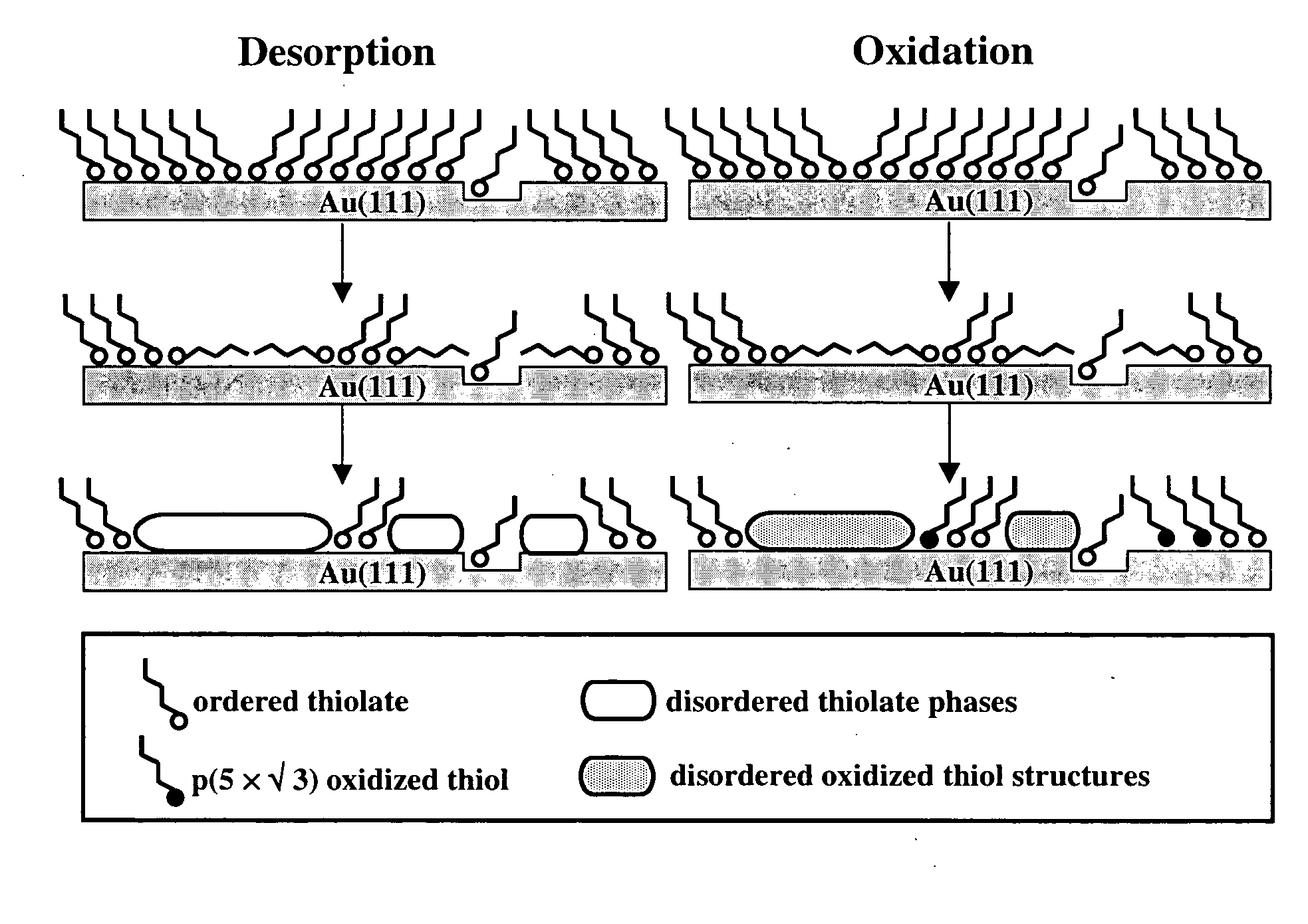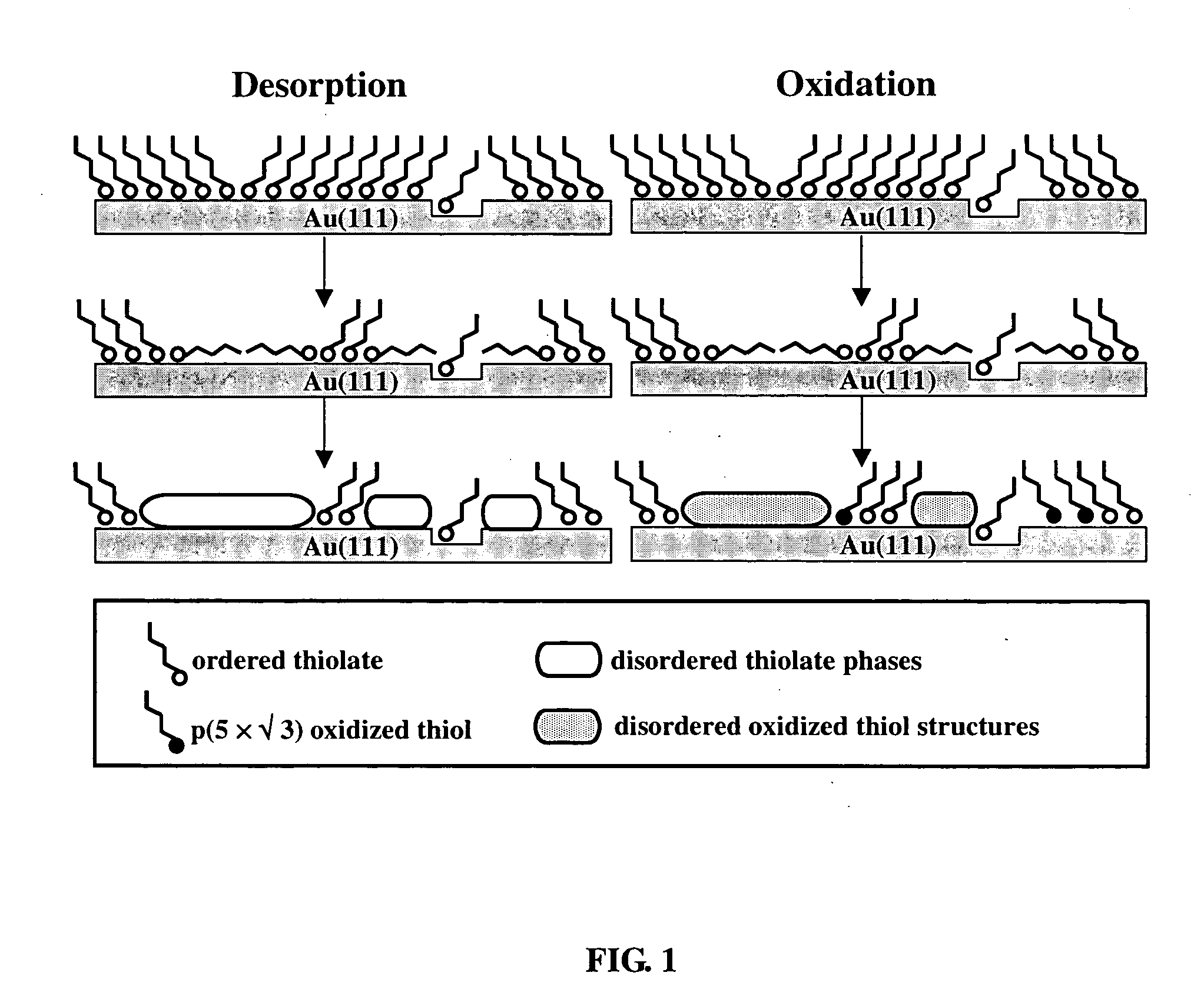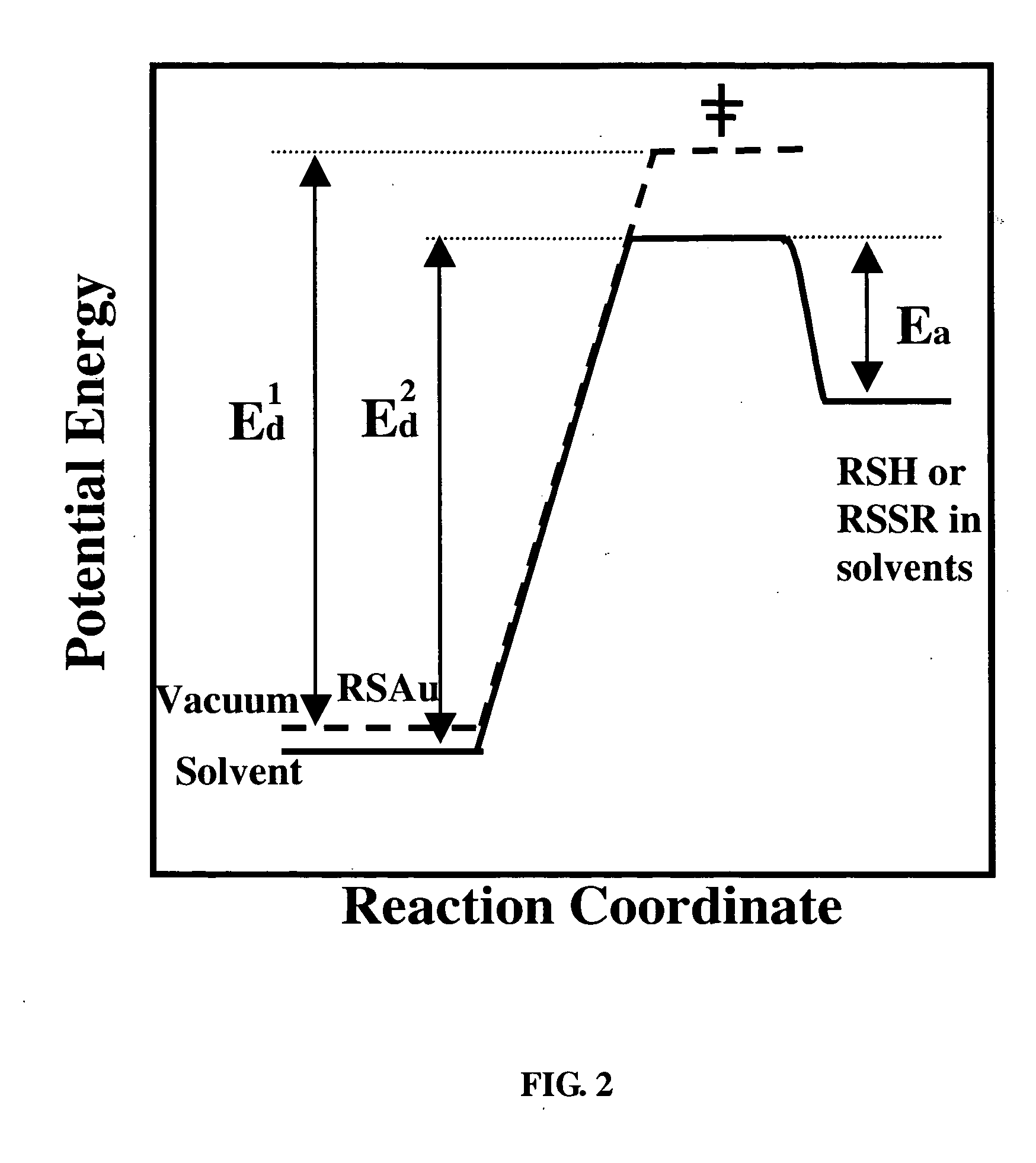Stabilization of self-assembled monolayers
a self-assembled monolayer and stabilizer technology, applied in the field of self-assembled monolayer stabilization, can solve the problems that the uhv conditions do not generally help sam applications, and achieve the effects of reducing free energy, and reducing the free energy
- Summary
- Abstract
- Description
- Claims
- Application Information
AI Technical Summary
Benefits of technology
Problems solved by technology
Method used
Image
Examples
example 1
Preparation of Self-Assembled Monolayers
[0163] Gold (Alfa Aesar, 99.99%, Ward Hill, Mass.) was deposited in a high-vacuum evaporator (Denton Vacuum Inc., Moorestown, N.J., model DV502-A) at 2×10−7 Torr onto mica substrates (clear ruby muscovite mica, S&J Trading Co., NY). The mica was freshly cleaved immediately before being mounted on the substrate holder inside the vacuum chamber. The evaporation rate was 3.0 Å / s, and the mica substrate was maintained at 625 K during Au deposition. After evaporation, films were annealed at 625 K for 20 minutes to yield relatively large Au(111) terraces, 100 to 200 nm in lateral dimension according to our scanning tunneling microscopy (STM) (Yang, G., Liu, G. Y. J. Phys. Chem. B 2003, 107, 8746-8759; Qian, Y., Yang, G., Yu, J. J., Jung, T. A., Liu, G. Y. Langmuir 2003, 19, 6056-6065) and atomic force microscopy (AFM) measurements (Xu, S., Laibinis, P. E., Liu, G. Y. J. Am. Chem. Soc. 1998, 120, 9356-9361; Xu, S., Cruchon-Dupeyrat, S. J. N., Garno,...
example 2
Atomic Force Microscopy (AFM)
[0165] The atomic force microscope used for this study incorporates a home-constructed, deflection-type scanner controlled by commercial STM 1000 electronics controller and software (RHK Technology, Inc., Troy, Mich.). The setup allows simultaneous acquisition of multiple images such as topography, frictional force and elasticity images. The scanner can be operated under ambient laboratory conditions, or in liquid media (Kolbe, W. F., Ogletree, D. F., Salmeron, M. B. Ultramicroscopy 1992, 42, 1113-1117; Liu, G. Y., Fenter, P., Chidsey, C. E. D., Ogletree, D. F., Eisenberger, P., Salmeron, M. J. Chem. Phys. 1994, 101, 4301-4306). The cantilevers-made of Si3N4 were sharpened microlevers (Veeco Metrology Group, Santa Barbara, Calif.) with a force constant of 0.1 N / m. Images were acquired with a typical force of 0.1 nN using contact mode in liquid media.
example 3
Scanning Tunneling Microscopy (STM)
[0166] The scanning tunneling microscope used for these studies incorporated a walker type configuration scanner (UHV 300 VT STM, RHK Technology, Inc. Troy, Mich.) (Yang, G., Liu, G. Y. J. Phys. Chem. B 2003, 107, 8746-8759; Qian, Y., Yang, G., Yu, J. J., Jung, T. A., Liu, G. Y. Langmuir 2003, 19, 6056-6065). The STM tips used for these studies were tungsten wires cut under ambient condition, and then electrochemically etched in a 3M KOH solution at 2.1 V. A homemade electrochemical potentiostat was used to automatically monitor and stop the etching process when the current dropped below the setpoint (Yang, G., Liu, G. Y. J. Phys. Chem. B 2003, 107, 8746-8759; Qian, Y., Yang, G., Yu, J. J., Jung, T. A., Liu, G. Y. Langmuir 2003, 19, 6056-6065). STM piezoelectric scanners were calibrated laterally with the periodicity of graphite(0001), and vertically using the height of Au(111) steps (2.35 Å). Calibrations were further verified by the periodicity ...
PUM
| Property | Measurement | Unit |
|---|---|---|
| activation energy | aaaaa | aaaaa |
| activation energy | aaaaa | aaaaa |
| activation energy | aaaaa | aaaaa |
Abstract
Description
Claims
Application Information
 Login to View More
Login to View More - R&D
- Intellectual Property
- Life Sciences
- Materials
- Tech Scout
- Unparalleled Data Quality
- Higher Quality Content
- 60% Fewer Hallucinations
Browse by: Latest US Patents, China's latest patents, Technical Efficacy Thesaurus, Application Domain, Technology Topic, Popular Technical Reports.
© 2025 PatSnap. All rights reserved.Legal|Privacy policy|Modern Slavery Act Transparency Statement|Sitemap|About US| Contact US: help@patsnap.com



